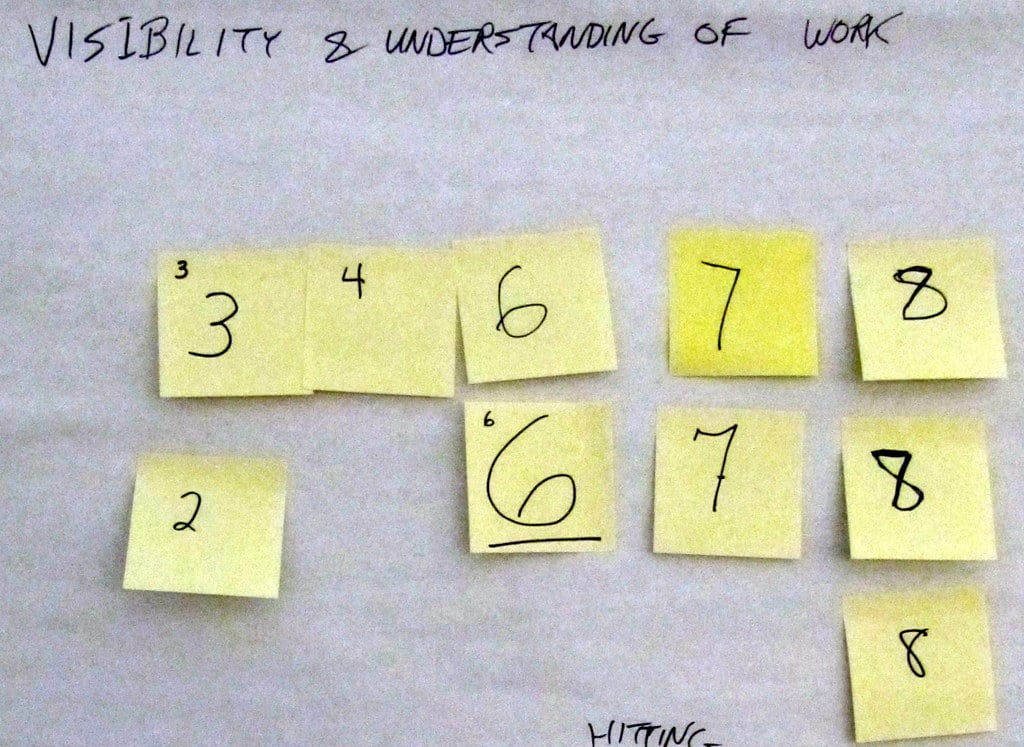Once upon a time, I was visiting with a client that wanted to do a reality check of the planned ship date for the release. Here is how you can leverage the wisdom of crowds to get a accurate prediction for the release date in just 30 minutes.
Step 1: Get the team together
Call everyone over. Set up a meeting. Whatever. Aim to get all roles: product, dev, QA.
Step 2: Assess Understanding of Scope
It is a good idea to see how well people understand the scope of the project/release. This will tell you how much stock to put in their estimates/understanding. It will also tell you how much people are working in silos. On healthier teams I coach, everyone on the team knows the whole release scope and can walk people through it. It’s sitting on the wall in the team room where they can see it every day.
This team came up with about 6/10 where 10 = full understanding.
We can see that the team thinks it has an OK handle on the work.
Step 3: Confidence in the Existing Release Date
The next step is to ask the team how confident they are in hitting the release date. This team came up with about 5 wisonout of 10 where 10 = Yes, we will make it for sure.
As you can see the team is strongly divided between “not a chance” and “confident”.
Step 4: Estimate Time Remaining
The final question is where the real gold is: How many months before we will ship?
As we can see there are three votes for 5 months and three votes for 6 months. (Sorry, didn’t notice some of the 5 month votes were in the wrong place before taking the picture). Using Wisdom of Crowds, we can see that the release is about 5 months away. Not the 3 months that was expected. Bad news for sure, but good to know now.
Step 5: Conduct a Retrospective (optional)
While you have the team together, you may as well conduct a retrospective to identify what the team can do immediately to work more effectively. Chances are if a project is in bad shape, they cut retrospectives a while ago. You will need another 1 to 2 hours for this. In the case of the example client above, we did a retrospective and the team started acting on their findings immediately to turn their ship around.
Caveats
Many organizations, even “Agile” ones do not like talk about inconvenient truths such as not making a release date. See: Red Pill, Blue Pill
Why Do We Need This?
You may be on a well-run Agile project. In which case, release forecasts are updated on a regular basis and tough decisions are made about scope and date. But many Agile teams still face the challenges of fixed scope + fixed date and the pressure that comes with it.
The team I was working with in this story was supposed to be doing Scrum but was in an ad-hoc mess that bore no resemblance to the Agile I know and love.





